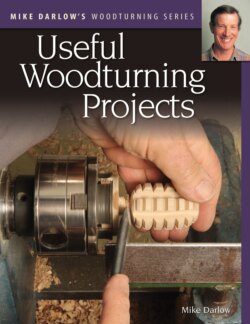Читать книгу Mike Darlow's Woodturning Series: Useful Woodturning Projects - Mike Darlow - Страница 21
На сайте Литреса книга снята с продажи.
1.2.7 Design
ОглавлениеYou should design before you turn. To many turners design is an alien and onerous practice. They therefore favor non-useful turning in which informal designing as you turn is common even though wood which has been undesirably cut away can’t be restored to its former state.
Design is the important input—the turning should be the easy part you do at the end. But if your turning technique is poor, you’ll tend to neglect designing—why bother with it when you’re unlikely to be able to turn what you might design? However once you are a competent turner, the quality of your design greatly influences the quality of your turning output. For example the new gate-post finial in the foreground of figure 1.5 has been competently turned (on an automatic lathe), but is of uninspired design.
A misconception which favors the non-useful is that designing useful turnings is less creative than designing non-useful. Useful-turning design can be more demanding because it is constrained by the need to satisfy use in addition to other objectives. And usefulness is not incompatible with design excellence or beauty.
It’s true that many hand turners like to produce ornament. I absolutely agree that the ornament of many of this book’s projects is historic in style. But once a design, a style or a design feature is invented, it instantly becomes historical. Is it important whether the invention occurred a day, a year, a century, or a millennium ago? Many of the notable wooden bowls and vessels turned in recent decades have forms resembling examples produced in antiquity in other materials, but this doesn’t seem to be regarded adversely.
